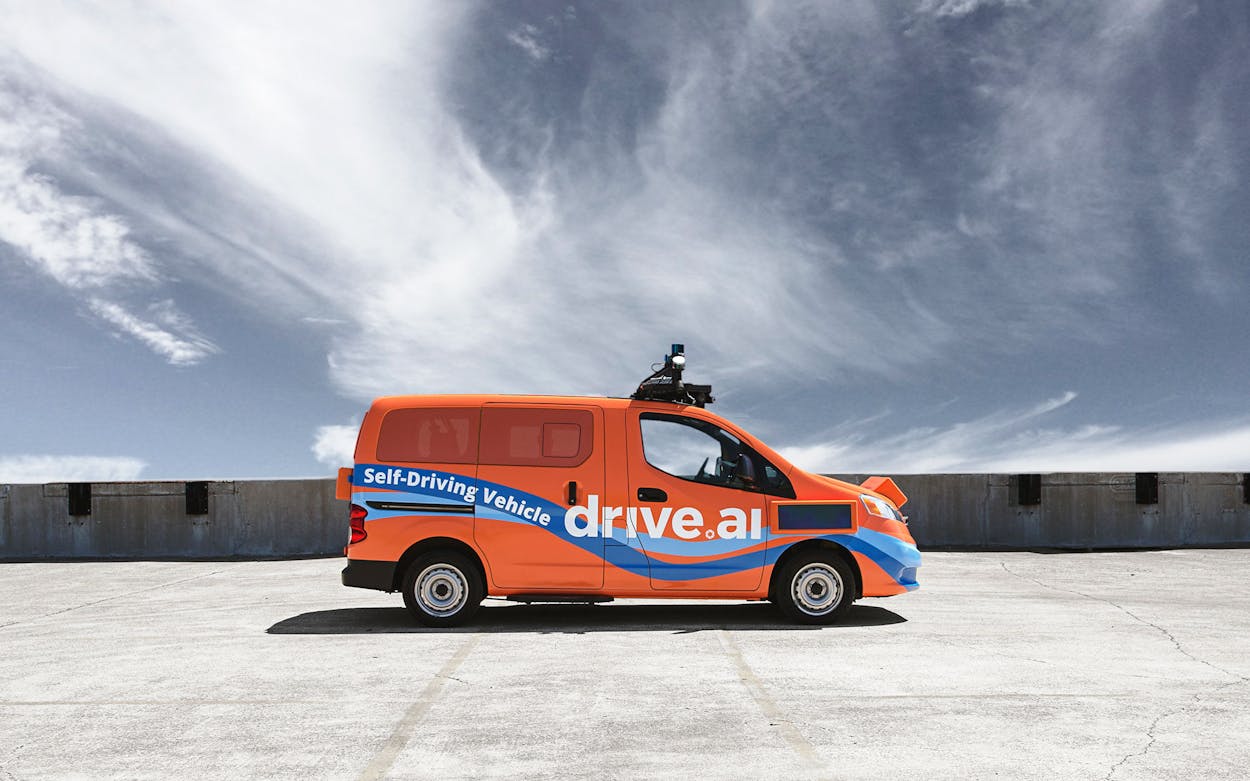The future will be autonomously driven. Automotive industry companies and tech giants alike are betting on it: As of last October, $80 billion had been invested in self-driving cars. So far, the technology is promising, too. Driverless cars have been on the roads in various capacities for years, and while it’s hard to quantify statistically, tests suggest that autonomous cars are no less safe than cars driven by humans. Given the outsized investment on the part of the auto industry, our willingness to let someone else take the wheel through the rise of rideshares like Uber and Lyft, and our increasing reliance on automation like Alexa, widespread adoption of self-driving cars is a question of “when” rather than “if.”
That time is coming soon. Drive.ai, a driverless car company based out of California, is launching in Frisco in July with a six-month-long trial run. The trial is limited in its scope: Users who want to take a robotic ride can do so via pick-up and drop-off areas which, while still being finalized, are expected to primarily shuttle people who live and work near the city’s Dallas Cowboys-affiliated The Star complex to restaurants and retailers nearby. It’ll function more like an on-demand shuttle bus for lunch patrons who don’t want to park than a game-changer for people looking for new ways to traverse the suburbs.
Still, as early tests go, it’s exciting. There’ve been plenty of tests—in Texas, Arizona, California, and elsewhere—of driverless cars, but not much in the way of consumer-facing trials. People in Austin got accustomed to the sight of autonomous Google cars cruising various neighborhoods, but they couldn’t actually get in one. Drive.ai’s customers in Frisco, though, will be able to hail a ride via the company’s app and cruise around while a human back-up driver answers their questions. (Because the route is limited, the company isn’t charging for the service during the trial.) This will, presumably, give Drive.ai a data-set that various companies testing self-driving cars don’t yet have: A sense of how many people use the service, how comfortable they are with it, and how efficient the cars are when they’ve got passengers in them. It’ll also give them a chance to make autonomous cars seem less alien. Right now, they’re still largely the province of speculative fiction, but six months worth of photos and video of people cruising the Dallas-Fort Worth suburbs in vehicles without drivers could normalize self-driving cars for potential users.
The market for driverless cars will likely be large, whether they’re sold directly to consumers, used by companies in a ride-sharing fleet like Uber or Lyft, or a combination of the two. But in addition to being useful in big cities, they’re going to serve a real purpose in suburbs like Frisco. Population density and distribution in dispersed areas likely mean that the autonomous cars will work to solve what’s known as the “last mile” problem. Public transportation is slimly utilized in suburban areas in part because, even if there’s a bus or train that can take people from their particular suburb to employment centers downtown, you still have to hop in your car and drive to the bus stop or train station—and once you’re doing that, why not just drive all the way to work?
Autonomous cars could potentially bridge that gap, and the current trial’s focus on a Dallas suburb suggests that both Drive.ai and Frisco are pursuing it. In a statement on Monday, Frisco major Jeff Cheney said, “Today definitely marks a mobility milestone for our entire region. It also gets us closer to achieving one of our council’s ‘Top Ten’ goals, which is to improve traffic throughout Frisco, one of the fastest growing cities in the country.”
Working solely in a single suburb also gives Drive.ai the chance to manage their rollout in a controlled way. The fleet of cars will be able to keep track of road conditions like construction, driver and pedestrian behavior, and other potential hazards. One of the challenges that the self-driving car industry faces is that, when many tests occur on the same terrain, the cars risk being ill-equipped for unfamiliar situations as they expand. Starting in Frisco is likely to give Drive.ai enough data for how suburban North Texas drivers operate that they’ll be able to spread out across the region. That’s no small deal when you’re talking about the fourth-largest metropolitan area in the country, and makes the Frisco test an effective pilot program for how autonomous cars are likely to roll out across North Texas.








